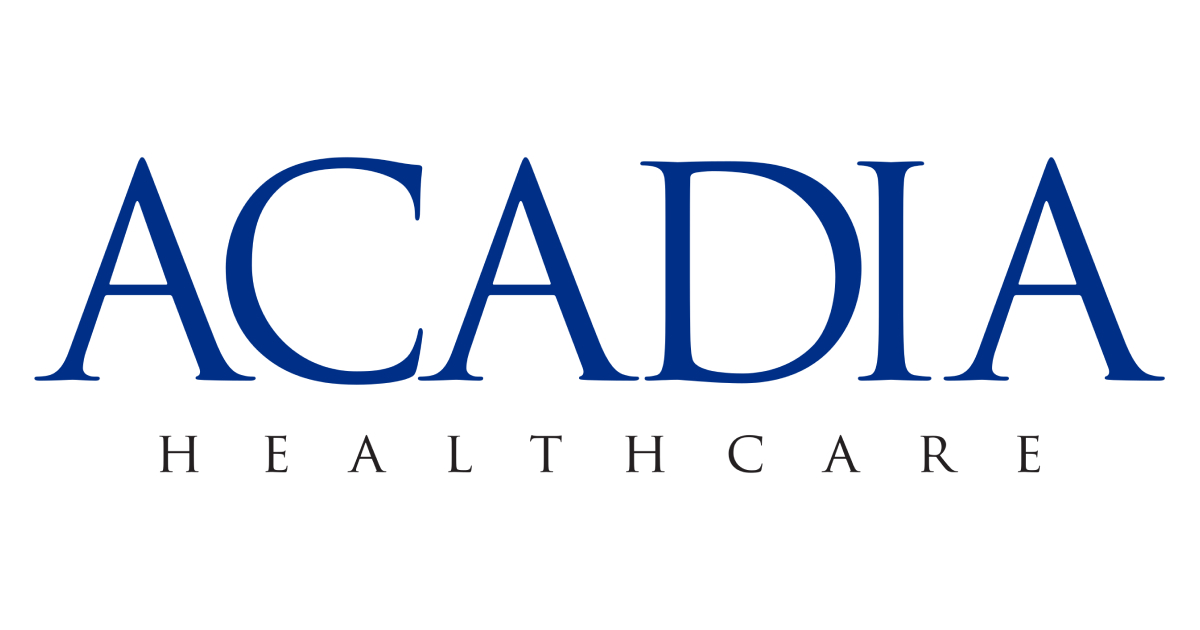Acadia Healthcare’s Review Following Strong Q4 Results

Analysts at RBC Capital provided their views on Acadia Healthcare Company, Inc. (NASDAQ:ACHC) following the company’s recently posted Q4 results, with EPS of $0.81 coming in better than the consensus estimate of $0.68.
According to the analysts, the company’s strong results reflected strong demand and labor cost management despite a tough environment, while initial 2022 guidance exceeded expectations thanks in part to strong 2021 M&A execution.
According to the brokerage, the company remains well-positioned to capitalize on increased demand for addiction and mental health treatment through the pandemic. Management’s balanced organic and inorganic growth strategy should continue to provide incremental upside in an attractive industry with secular tailwinds.
The company expects full 2022-year EPS in the range of $2.85-$3.15, compared to the consensus of $2.91, and revenue in the range of $2.55-2.6 billion, compared to the consensus of $2.48 billion.
| Symbol | Price | %chg |
|---|---|---|
| SRAJ.JK | 11700 | -0.85 |
| MIKA.JK | 2650 | 2.26 |
| SILO.JK | 2320 | 0.86 |
| HEAL.JK | 1450 | -2.07 |

Acadia Healthcare's Stock Upgrade and Strategic Review
- Raymond James upgraded Acadia Healthcare (NASDAQ:ACHC) to "Outperform" with a new price target of $30.
- Khrom Capital Management calls for a strategic review of Acadia Healthcare, including a potential sale.
- ACHC's stock price has increased by 8.43%, reflecting growing investor interest despite challenges.
Acadia Healthcare (NASDAQ:ACHC) is a leading provider of behavioral healthcare services. The company operates a network of facilities offering a range of services, including psychiatric and addiction treatment. Acadia competes with other healthcare providers in the behavioral health sector, striving to deliver quality care and expand its market presence.
On October 3, 2025, Raymond James upgraded its rating for ACHC to "Outperform," signaling confidence in the stock's potential. At the time, ACHC was priced at $26.62. Raymond James also increased the price target from $26 to $30, suggesting an optimistic outlook for the company's future performance.
Khrom Capital Management, a major shareholder, has called for a strategic review, including a potential sale, due to perceived governance failures and poor performance. This highlights ongoing challenges within Acadia Healthcare, despite the recent positive stock movement.
ACHC's stock price has seen an 8.43% increase, or $2.07, reflecting investor interest. The stock fluctuated between $24.57 and $26.72 during the day. Over the past year, ACHC has experienced significant volatility, with a high of $60.52 and a low of $17.13.
Acadia Healthcare's market capitalization stands at approximately $2.46 billion, indicating its size in the market. The trading volume for ACHC today is 3,511,931 shares on the NASDAQ exchange, showing active investor engagement.

Acadia Healthcare’s Review by RBC Capital
RBC Capital analysts slightly lowered their price target on Acadia Healthcare Company, Inc. (NASDAQ:ACHC) to $93 from $94 while reiterating their Outperform rating.
As the leading provider of high acuity behavioral and addiction treatment services, the analysts continue to believe the company remains uniquely positioned to benefit from multiple tailwinds, which should drive double-digit long-term growth.
The analysts said they came away incrementally more positive on the company’s strategic approach to capitalize on these opportunities with bed additions expected to grow capacity by 7-10% annually.
From 2024 through 2028, management expects revenue to grow at a 9-11% CAGR to $4.5-5.0 billion, or almost double 2022 revenue. Over the same period, management expects to grow adjusted EBITDA at a 10-12% CAGR to $1.06-1.2 billion. Management offered an initial 2023 revenue range of $2.790-2.860 billion, which is slightly ahead of the $2.820 billion consensus at the mid-point.

Acadia Healthcare’s Review by RBC Capital
RBC Capital analysts slightly lowered their price target on Acadia Healthcare Company, Inc. (NASDAQ:ACHC) to $93 from $94 while reiterating their Outperform rating.
As the leading provider of high acuity behavioral and addiction treatment services, the analysts continue to believe the company remains uniquely positioned to benefit from multiple tailwinds, which should drive double-digit long-term growth.
The analysts said they came away incrementally more positive on the company’s strategic approach to capitalize on these opportunities with bed additions expected to grow capacity by 7-10% annually.
From 2024 through 2028, management expects revenue to grow at a 9-11% CAGR to $4.5-5.0 billion, or almost double 2022 revenue. Over the same period, management expects to grow adjusted EBITDA at a 10-12% CAGR to $1.06-1.2 billion. Management offered an initial 2023 revenue range of $2.790-2.860 billion, which is slightly ahead of the $2.820 billion consensus at the mid-point.

Acadia Healthcare’s Review Following Strong Q4 Results
Analysts at RBC Capital provided their views on Acadia Healthcare Company, Inc. (NASDAQ:ACHC) following the company’s recently posted Q4 results, with EPS of $0.81 coming in better than the consensus estimate of $0.68.
According to the analysts, the company’s strong results reflected strong demand and labor cost management despite a tough environment, while initial 2022 guidance exceeded expectations thanks in part to strong 2021 M&A execution.
According to the brokerage, the company remains well-positioned to capitalize on increased demand for addiction and mental health treatment through the pandemic. Management’s balanced organic and inorganic growth strategy should continue to provide incremental upside in an attractive industry with secular tailwinds.
The company expects full 2022-year EPS in the range of $2.85-$3.15, compared to the consensus of $2.91, and revenue in the range of $2.55-2.6 billion, compared to the consensus of $2.48 billion.







